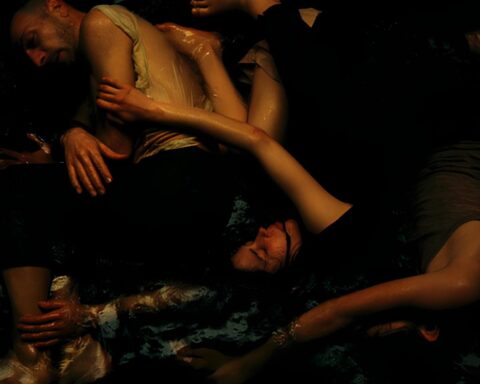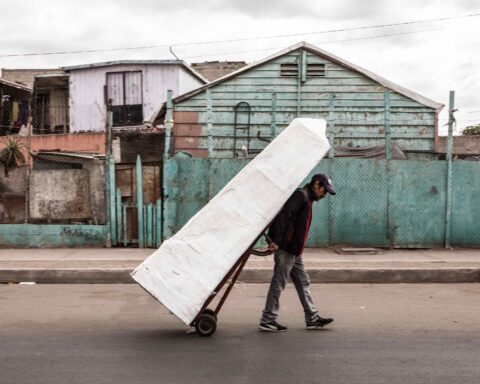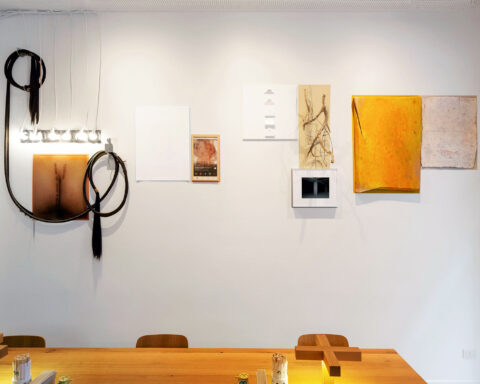When a phenomenon arises or a particular one returns, today’s very dynamic society does not adapt but tries to “surf” by finding a precarious balance. This balance then pours into relationships, into our way of life, and it makes us better in some way, because we are adaptable to change, on the other hand, however, one of the risks of this phenomenon is, for example, that going less deeply into the issues. This does not happen in contemporary art, which instead digs, bringing to light the various problems that surround us.
The artists interviewed, Ornaghi & Prestinari, are well aware of this, who through their works and projects highlight the instability of human relationships, and the importance of know how, which can gratify and make one proud because learning and mastering something requires attention and above all time, what we often don’t give ourselves. Therefore, a sort of invitation to meet again emerges, to find a moment to grasp this beauty.
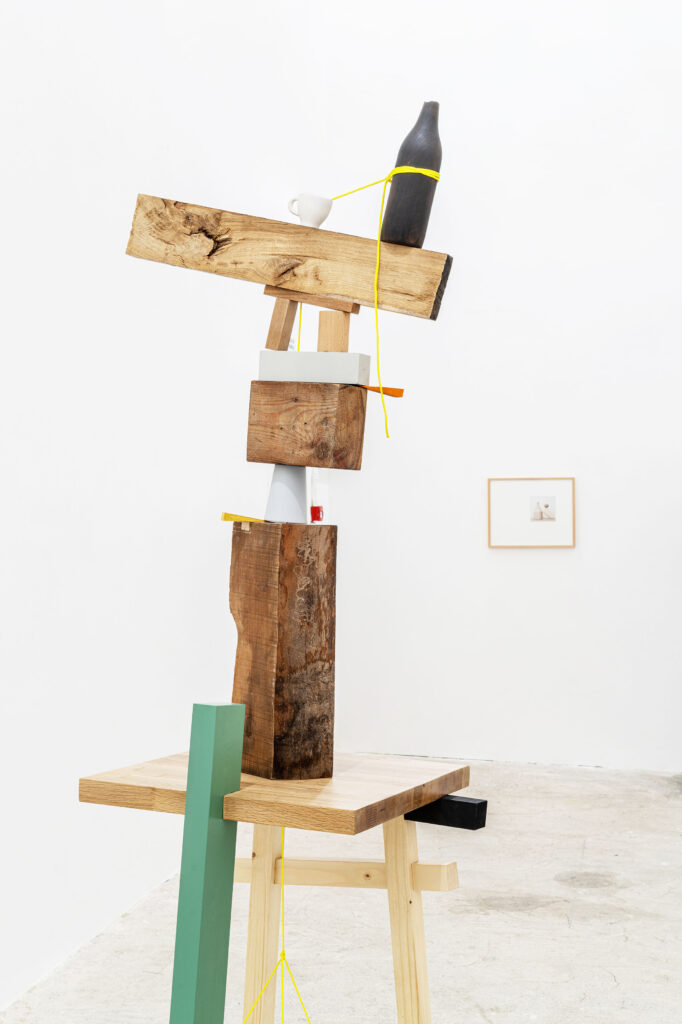
Documenting myself on the work of the artists Ornaghi & Prestinari, many of the words that emerge, observing their works or reading previous interviews, are inherent in the relationship with the other. Words such as touching, crooked, and finding each other emerge from their works. In “Sbilenco” which gives the title to the exhibition now underway at the Galleria Continua in San Gimignano, Italy, the two artists refer to the painting with the crooked frame, following a geometric design unbalanced in its imperfection. The story continues with “Bedroom” in which a bed has an unusual division, referring to the literary work Gli Amori difficili by Italo Calvino, in which a couple cannot meet because their respective work shifts do not coincide. In work one of the spouses is together with the other but at the same time is hindered in the intimate relationship, they can only partially reach each other. Distance and proximity, therefore, coexist in the common space.
The concept of crookedness is also repeated through the instability of the series of small sculptures that rest on a precariously balanced structure between the stage and the stalls, risking falling and often finding themselves in dim light. These everyday objects represent an exhibition of personal tools or mingei objects, a Japanese movement that celebrated the beauty found in humble, everyday objects.
A need emerges from this exhibition, that of relating to others. Encountering the other leads each of us to question ourselves and helps us to get to know ourselves. In order for the relationship with the other to be fruitful, it is necessary to leave a part of ourselves and take something from the other. Only through the exchange can people grow together. This is where Toccante (Touching) enters the scene. Analyzing the word, the present participle of the verb to touch, we have the upheaval of something, a touching episode, touching or moving words and then the touch, an act that reaches us through two senses, hearing and touch and unleashes in our emotions. In particular, touch is used in psychotherapy with various methods and purposes through a “targeted presence of the therapist’s auxiliary self” (Rizzi, 2011).

Touching is more than a sensory stimulation: touching is communicating with others and different types of touch can convey different emotions (Hertenstein, 2002). Touch has been described as the most important sense organ for making contact with the outside world. Without it, life is nearly impossible (Barnett, 1972).
With touch, artists have crafted purely by hand for the joy of manipulating, visible objects on display with two lenses. First, through the manipulation of materials, Valentina and Claudio set out to find the poetry inherent in these objects. On the other hand, they want to reflect on the contrast between the uniqueness of manual work and the global uniformity of mass production, a very important transversal concept for the artistic duo. The exhibition is completed by a series of paintings inspired by the theme of rotation as a generative act: “Pensiero Ellittico”, “Scarabocchio”, “Sfiorare” or “Svitato” have the common denominator of being polycentric. The works propose leaving one’s own centre to meet the Other, in a continuous dialogue of sharing in line with the poetics and concerns of the artists. The other is our obsession. The other is our world, our mirror.
David Brooks — columnist for the “New York Times” and writer — states that “we are defined by our relationships with others, we are social animals and we are inextricably linked to each other”. According to the American journalist, having compassion for others leads to working in a group, face to face, giving greater benefits thanks to the exchange between people. An exchange that becomes a sort of fusion between minds, when you feel a feeling of love. Brooks refers to the simple concept of the union of the psyche, the deep bonds that are created and can make two people feel like a single entity.
Thanks to Ornaghi & Prestinari for accepting this interview.
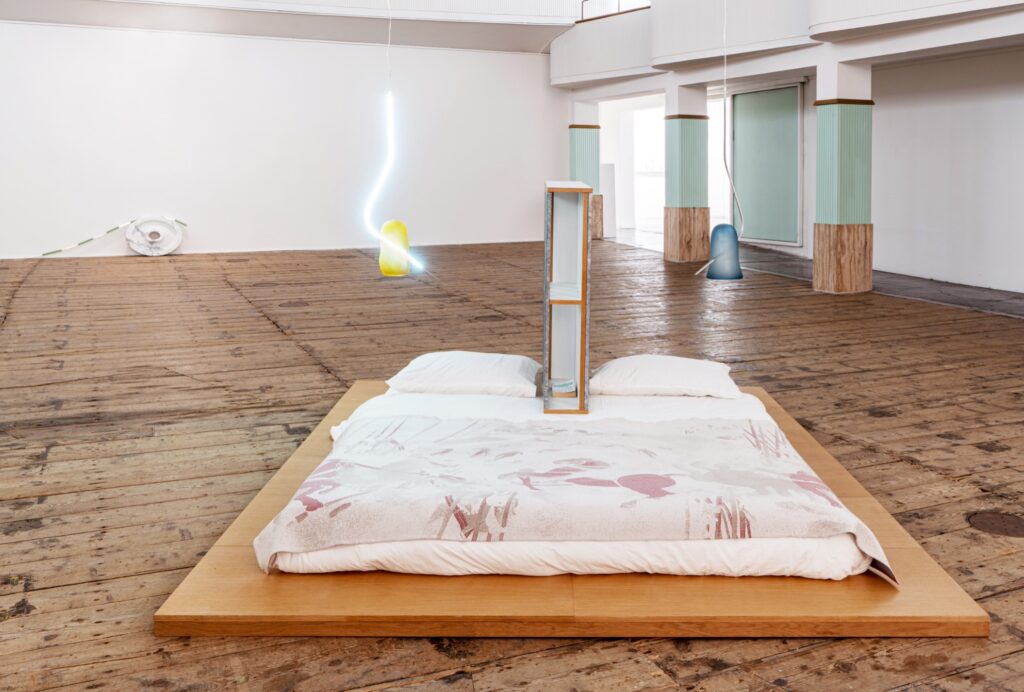
Marika Marchese: In many of your works you bring the relationship, it makes me think how we are chemistry and that in chemistry the bond is the result of an interaction between atoms that exchange electrons or that another important presupposition of the chemical bond is the length: that is the strength of the bond.
Ornaghi & Prestinari: We try to highlight how strong bonds are at the same time in their fragility and how instability can find itself in absolute balance.
But also how the coexistence of opposite polarities, positive and negative, generate the attraction necessary to keep us united. What separates at the same time can be what unites.
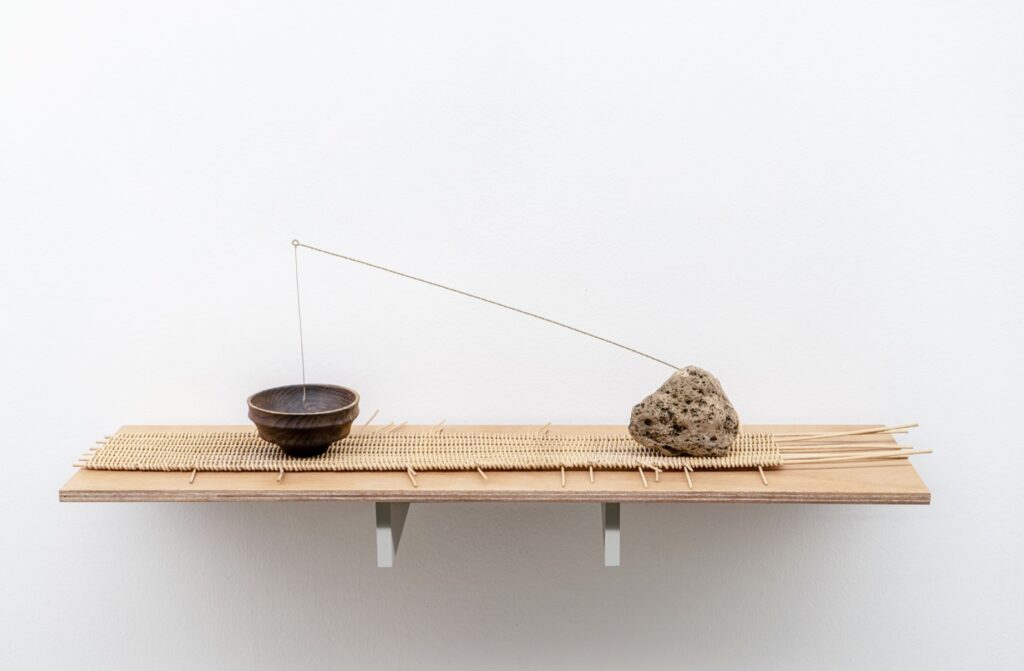
M.M.: We can say that there are several similarities and analogies with what happens to matter.
O.P.: Talking to Cesare Pietroiusti last year, on the occasion of a conversation during our personal exhibition “Toccante” in Rome, he pointed out how in our work “Rintocco” – where one glass cyclically moves towards the other until it touches resonate – one could speak of a continuous dialectic of attraction and repulsion within the relationship. His point of view started from a parallelism with chemistry to get to psychoanalysis.
Indeed, the swarm of electrons that surrounds the matter of things causes them, despite getting close to each other, at the same time intrinsically maintain a repulsion motion given by the meeting of all the negative polarities found on the different surfaces in contact.
Maybe it’s never possible to really touch each other.
M.M.: I have many questions to ask you, starting with the complex, the almost alchemical balance that distinguishes you as a creative couple. Many elements combine to keep a creative partnership together. How do you do? How do you start to create a work of art?
O.P.: Our practice is based on dialogue, sharing and the search for balance.
We work by triggering a continuous dynamic of question and answer, both between us and between us and reality. For us, an idea is first of all an intuition, a mental image that we translate into a sketch that we then leave to “decant” in an archive. We periodically pick up all these notes and discuss them to understand how to start developing a speech.
As in a psychoanalytic process, we send our intuitions back to each other to start a process of decoding and reprogramming.
Then we begin to test the materials in our laboratory and, as Munari says, from what comes what. We believe that trying to do something, translating a project with materials, activates another way of thinking and talking in parallel to the more conceptual one. We, therefore, try not to separate the conception phase from the realization one, everything happens organically.
We pursue complexity and try to preserve it within the work despite the fact that it is the result of a synthesis of a whole series of stimuli and reflections.

M.M.: How do you divide the work?
O.P.: We try not to divide but indulge our natural inclinations. We are interested in ambiguity and ambivalence. When we start a new job we have direction but we are also open to welcoming the unexpected as creative possibilities. Often, it seems that when you fail to translate something into the subject matter there is a hint of failure. For us, however, things are interesting precisely because they may not be translatable into a synthesis. Because they put up some resistance. A better work may be next to the one you were trying to do.
M.M.: Are there situations, readings, or triggering events?
O.P.: We were saying that our research has a relationship as its central theme. On the one hand, the relationship between man and object, therefore all the facets of material culture: the potential of materials and their history, design, both artisanal and industrial production techniques, and the life cycle of things.
On the other hand, we are interested in the relationship with the Other going to investigate the interiority and the human existential condition through an ironic and light language for us not to take ourselves too seriously. We try to maintain an intimate, emotional tension, preserving the mystery and elusiveness of the poem.
What inspires us are real-life situations, our own experiences but also literature or cinema. Nature, the materials themselves, or places rich in history where different times coexist, or districts linked to a certain cultural heritage. We imagine our works as episodes of a larger narrative.
M.M.: Which material do you prefer among those used so far? Are there any particular meanings?
O.P.: Our attention to materials also moves according to availability. We often focus on one material for long periods because we have won a scholarship, a residency or a collaboration with a company in a specific sector has begun.
Furthermore, the link between craftsmanship and natural materials has for us a value linked to authenticity and concreteness. We try to contrast all the space that technologies and digital are taking up in our lives with equal attention to self-construction and the materiality of the world.
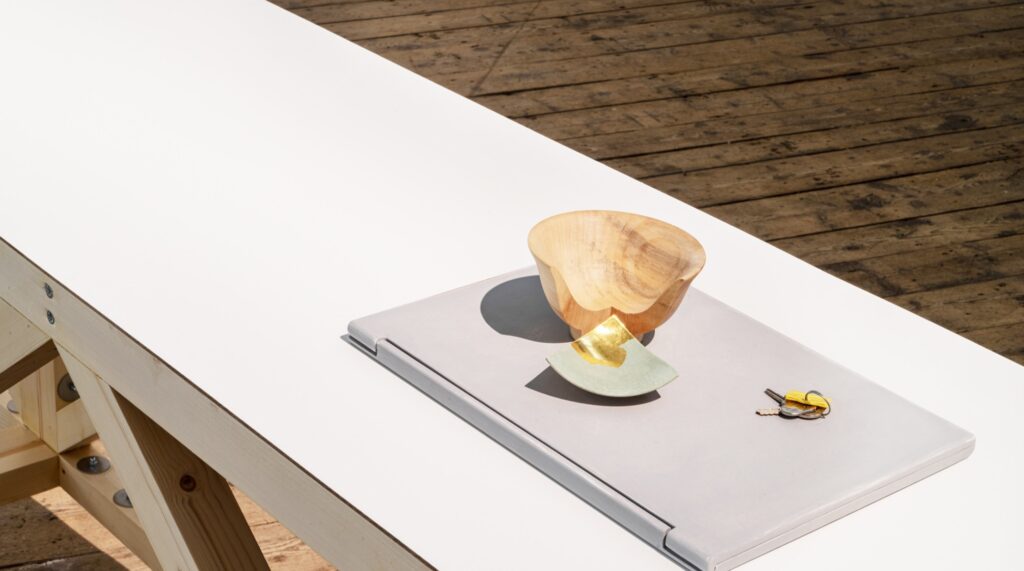
M.M.: Another element that I notice, observing your works, is a sort of Maieutic, pulling out of what can be considered by others waste or something shapeless, a sculpture, a piece full of things to say. Is it so? (Reflection looking at Early Autumn and Keeping Things Whole). How important are the objects to you? Is there a language that objects speak? According to Mendini, objects are humanized and possess a soul, what do yours tell about?
O.P.: Yes, we often happen to have access to waste materials from which works can be born or we create objects that seem broken from scratch. We are inspired by everyday objects, in particular, we are interested in those objects that become things because they are durable and remain for a long time in our lives and those of several generations. Things are witnesses and at the same time, we can project our emotions onto them. We trigger a sort of animism in objects as if they could speak for us about what we are feeling.
The object is for us a form of mediation. Man surrounds himself with objects to mediate between himself and the world. The curious thing is that the objects themselves become the world and change our gestures, habits and ways of thinking. In this concatenation of cause and effect, boundaries are lost and it is no longer easy to establish, for example, where the instrument ends and the hand begins.

M.M.: Why the glass bottles and these melancholic elements?
O.P.: It is not difficult to come across abandoned bottles, at home on a table or in the street on the edge of a sidewalk or on a windowsill. They are presence, they tell of drinks to quench thirst, pass the time or forget. Glass interests us as it refers to transparency. It is an anti-sculptural material, it has no contrasts of light and shadow and leads us to think of the desire for possession as opposed to opacity and mystery.
M.M.: How important is housing? Dress and home concept.
O.P.: Dress and home are like protective wrappings, shells that shield your intimacy. Dwelling is occupying a place in the world in a more or less transitory way. Even the shade is a habitable space. Living also refers to habit, routine, to reiterating ourselves in a sort of continuity. Moving house, like changing clothes, is a bit of a life change. Often buildings and clothes act on our emotional sphere and change us more than we think. It’s not just us who reflect on the world but the reality is also reflected in us.
M.M.: Who are the artists, designers or writers, more generally the creatives who have inspired you and continue to inspire you?
O.P.: It really depends on the period and the project we are developing. We prefer that the public find possible references from time to time when they are not directly explicit.
M.M.: Some of your objects silently speak of working-class work, in Mattino and in Chapeau. Could you tell us more?
O.P.: We like to go to the studio and work all day doing rehearsals and experiments. The studio reflects our fascination for small family-run workshops, of a simple and industrious world in which work is done by hand. It is a laboratory inside what was a mechanical workshop up to twenty years ago. The architectural structure, the subdivision of the work areas and part of the furnishings refer to a way of working that Sennet describes well in his essay “The Craftsman” but also Primo Levi in La chiave a stella.
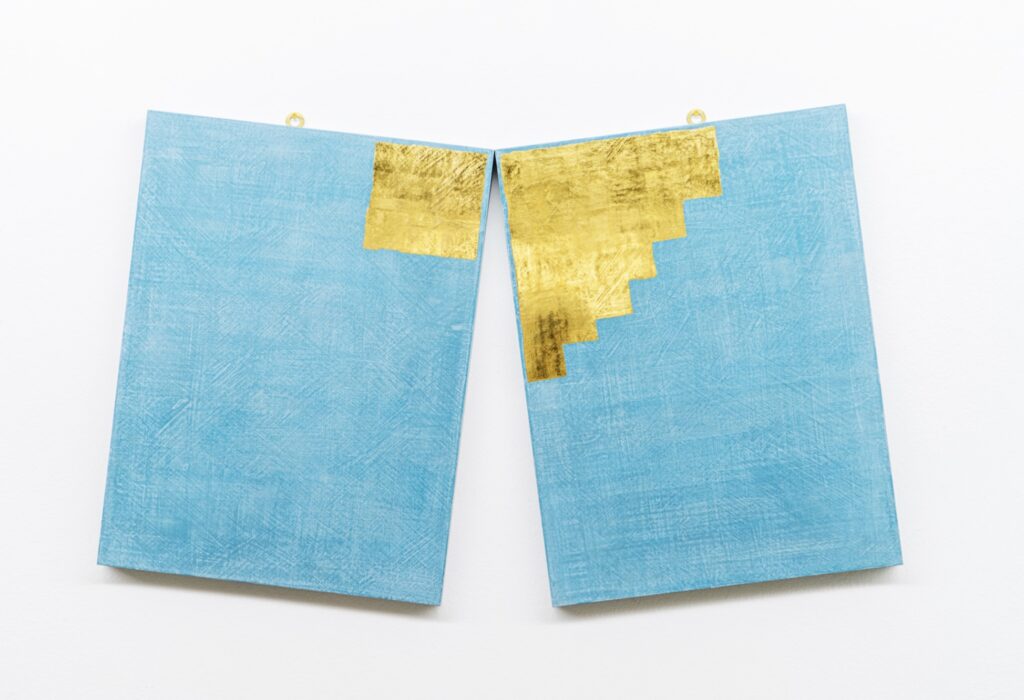
M.M.: Sennett in his book speaks of the craftsman as a demiurge, who creates his “cosmos” with skill and care, making the work become something more articulated than the well done. Thanks to this very cultured quote, which we should look into, it highlights the preciousness of craftsmanship. Thank you! How did you start? If possible tell me about some award, if relevant, or important event, such as the meeting with the gallery owners of Continua.
O.P.: We met in Milan at an Architecture and Design studio. We began collaborating in 2009 after we both moved to Venice to continue with our specialization studies at IUAV University. There we began to participate in various competitions such as those organized by the Bevilacqua la Masa Foundation. In 2011, while we were participating in a workshop for young artists of the Bevilacqua Spinola Banna per l’Arte Foundation, we had the opportunity to show our portfolio to various guests including the director of Galleria Continua, Verusca Piazzesi. In the following two years, she followed our work up to ask us to present a project for the Arco dei Becci space in San Gimignano to be proposed to Lorenzo, Maurizio and Mario, or rather the founders of the Gallery. In 2014, our first one-man show “Familiare” was held.
M.M.: Are there connections between alabaster and the Tuscan territory, as a characteristic material of some of your works, in general of the materials used?
O.P.: We started using alabaster after Valentina’s uncles gave us some pieces of stone in the shape of large eggs.
We then went to visit an alabaster’s workshop in Volterra together with Massimo Bartolini and we bought the first tools there. Thus was born the curiosity to try to work with that material. Alabaster fascinates us with its translucency. It offers many possibilities as extremely thin and transparent sculptures can be obtained. Surface finishes can vary widely, and a piece can go white and opaque as if it were made of sugar or shiny and clear as if it were made of plastic or opal glass.
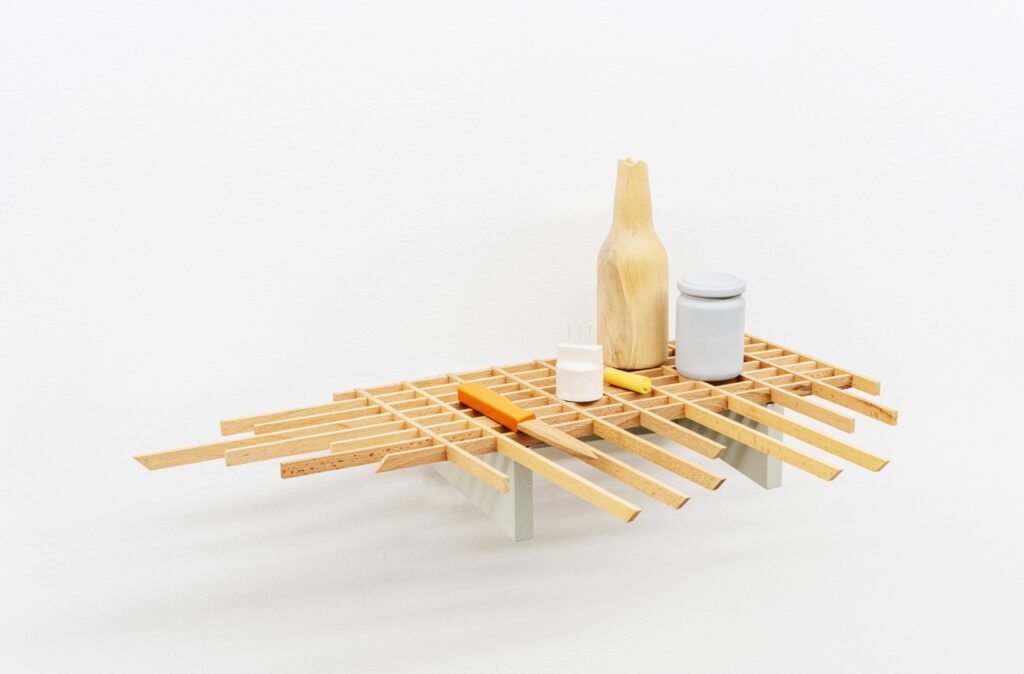
M.M.: Please, tell me about the symbology of your works.
O.P.: We are interested in preserving the polysemy within the work. Create multiple levels of reading at various depths.
M.M.: Who inspires you, if there are works or artists? Seeing Bialetti, Morandi came to mind.
O.P.: We are interested in culture in general as a container of traces that speak of man and his relationships with the world. Each object contains within itself a myriad of worlds, conveys ways of thinking, beliefs, skills, technologies, and values that are collective and combines these with personal universes. This is why we are interested in the history of design as well as the history of art and therefore there are constant references both to artists who have worked a lot with objects, and therefore also around the theme of still life, and to architects and designers.



